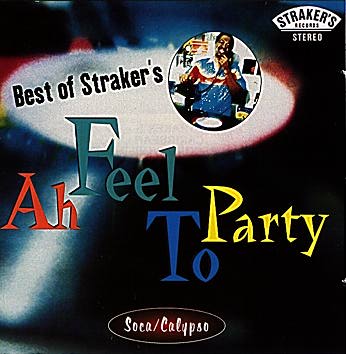 Rounder CD 5066/7 (2 CDs)
Rounder CD 5066/7 (2 CDs)
SHADOW Bass man (1974)
LORD MELODY Grine um (1976)
COUNT ROBIN Sparrow (1979)
SQUIBBY The streaker (1973)
CHALKDUST Chauffeur wanted (1989), Stickman's lament (1993)
BLACK STALIN Ah feel to party (1991), Kaiso music (1993)
KEN 'PROFESSOR' PHILMORE Pan by storm (1990)
LORD NELSON Warning (1988)
SINGING FRANCINE The wizard (1988)
CRO CRO Still de best (1991)
PROTECTOR Young and restless (1989)
MARCIA MIRANDA Dat is how I like it (1991)
NAPPY MAYERS Ole time days (1992)
BILL TROTMAN Going for king (1988)
CALYPSO ROSE Leh we punta (1987)
TRINIDAD RIO Travelin' man (1989)
BLAKIE Carnival '76 (1976)
WINSTON SOSO Carnival (1987)
MACHEL MONTANO 1st in de party (1991)
POSER Tonight (1987)
DUKE Rock meh (1986)
BROTHER EBONY Abu Bakr take over (1991)
EXPLAINER Mango (1993)
If you come to modern calypso with preconceptions based either on the music of the 1930s to 50s by figures like the Lion, Tiger, Atilla the Hun or Lord Executor; or on 1950s calypso popularizers Harry Belafonte and the Kingston Trio, this appealing twenty-year anthology of the Straker's catalog will come as a surprise.
A pleasant surprise too, if you appreciate calypso's enduring emphasis on topicality, sexuality, controversy and confrontation, traditions which date from Trinidadian music's earliest traceable origins two hundred years ago, and to even older African roots.
One of the surest measures of enduring tradition is its ability to keep pace with changing times and customs, allowing appealing new elements to merge with proven old ones. Government figures, celebrities and even calypsonians themselves are still grist for the mill, but so are contemporary good-time party soca (i.e. soul + calypso) dance tunes. Today's calypso, or kaiso, is an amalgam of old themes, mixed with modern recording techniques, amplified instruments, synthesizers, and all the other bells and whistles.
Brooklyn producer and label owner Granville Straker is primarily responsible to today's calypso sound. Trinidad and Tobago recording economics make it easier for singers to travel to Straker's Brooklyn studios than to record in Port-of-Spain, which is where they come every year to record carnival hits, with assistance from Straker's crack house band, led by veteran arranger Frankie McIntosh. Most Straker products are exported, which is why you'll only find them in a few shops in large U.S. cities with significant West Indian populations. Another barrier arises from the slow conversion to compact discs in T&T; Straker's only began publishing CDs in limited quantities in 1994.
This superb compilation will help the rest of us catch up on what we've been missing. Included are
Producer Gene Scaramuzzo laments having to eliminate material as good as that which he chose to fill the two and a half hours on these two CDs. Straker himself, Scaramuzzo notes, has trouble selling even 5,000 copies of a single album these days. Let's hope that Rounder's broad distribution system will enable this compelling music circulate more widely. If the rest of the Straker's catalog contains more treasures to compare with these, we should hope that there will be more to come.
Richard Spottswood, Hillandale MD (USA)